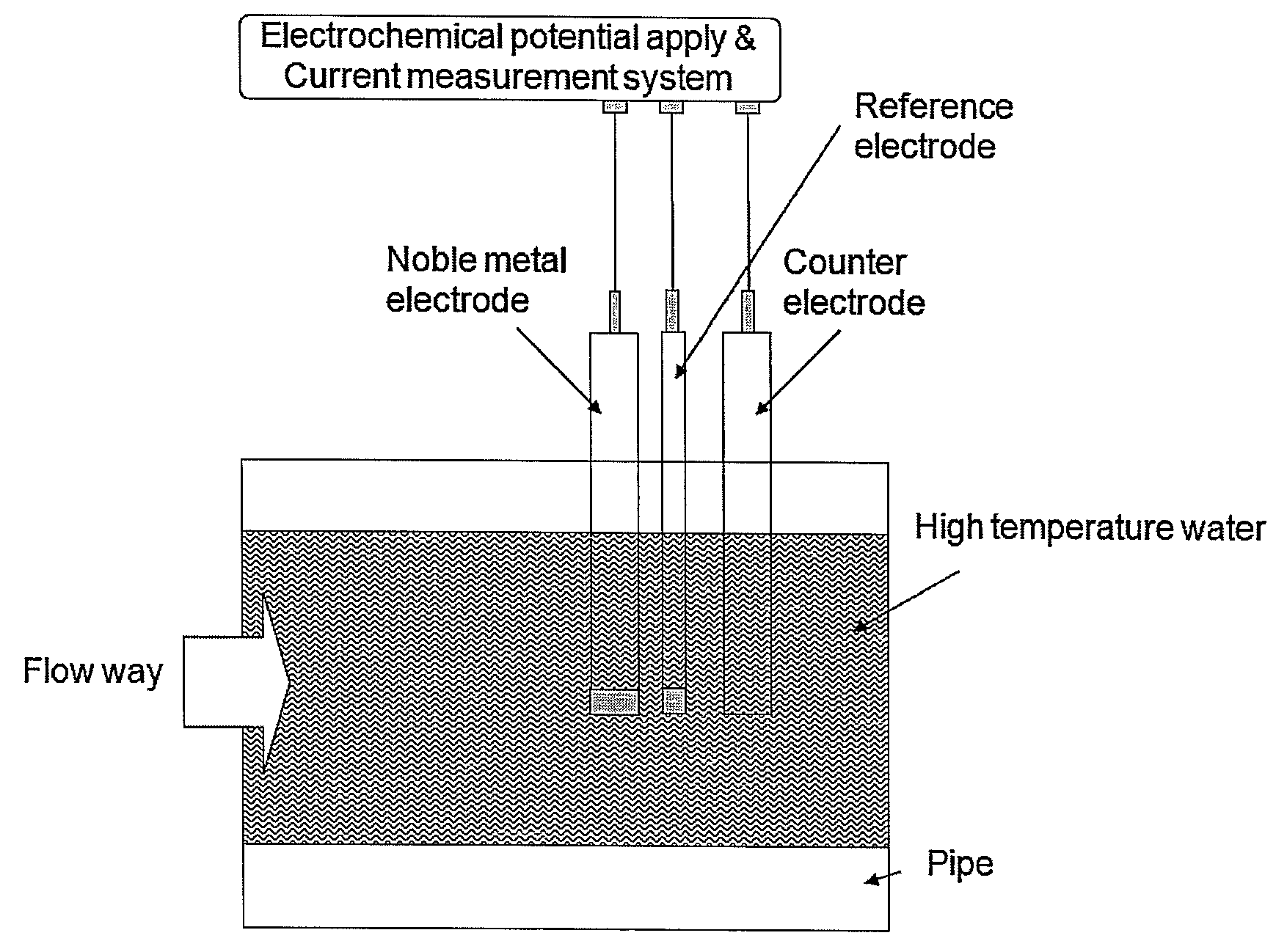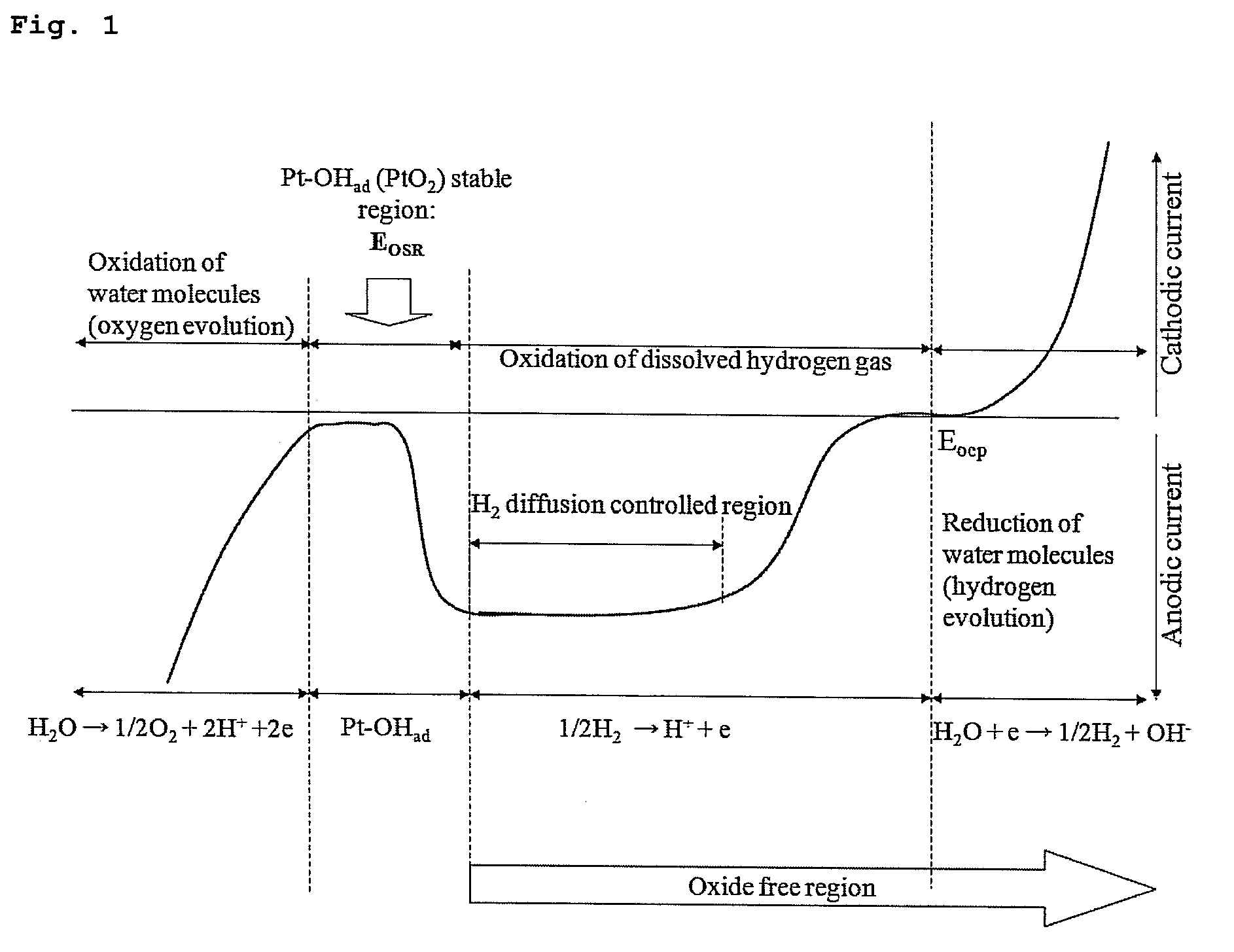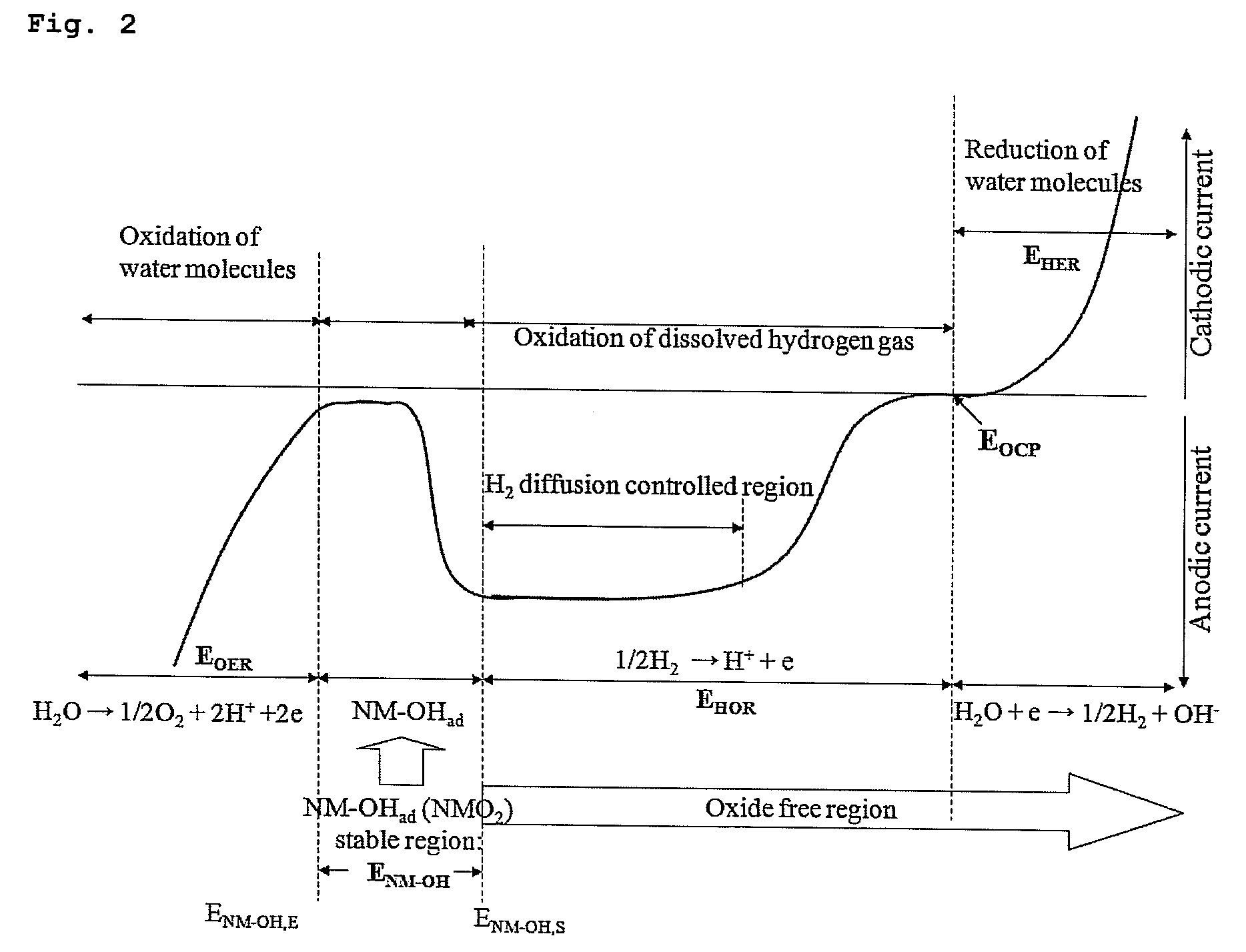Method of detecting impurities in high temperature aqueous solution and apparatus of detecting impurities for the same
a technology of impurities and aqueous solutions, which is applied in the direction of instruments, material electrochemical variables, and impedances, etc., can solve the problems of high corrosion environment of metal structure materials brought into contact with high-temperature cooling water, inability to detect harmful chemical species including anionic chemical species such as chloride ions in real-time without sampling in the state of high-temperature cooling water
- Summary
- Abstract
- Description
- Claims
- Application Information
AI Technical Summary
Benefits of technology
Problems solved by technology
Method used
Image
Examples
experimental example 1
Measuring the Concentration of Chloride Ions
[0062]A current change was measured by using a counter electrode along the concentration (0˜100 ppm) of chloride ions when moving a platinum electrode having an exposure area of 1.0 cm2 from an open circuit potential (EOCP) of the platinum electrode having −0.65±0.05 VAg / AgCl to a platinum oxide film-stabilizing potential (EPT-OH,M) having +0.5 VAg / AgCl in a lithium borate aqueous solution having a high temperature (280° C.) in which chloride ions existed.
[0063]FIG. 8 illustrates a graph in which oxidation current of dissolved hydrogen is measured during a period of time in which the platinum oxide film is formed on the surface of the platinum electrode when applying +0.5 VAg / AgCl to the platinum electrode in the lithium borate aqueous solution having a high temperature (280° C.) in which chloride ions exist. As illustrated in FIG. 8, it can be seen that the more the concentration of chloride ions increases, the more the initial current va...
PUM
| Property | Measurement | Unit |
|---|---|---|
| temperature | aaaaa | aaaaa |
| temperature | aaaaa | aaaaa |
| temperature | aaaaa | aaaaa |
Abstract
Description
Claims
Application Information
 Login to View More
Login to View More - R&D
- Intellectual Property
- Life Sciences
- Materials
- Tech Scout
- Unparalleled Data Quality
- Higher Quality Content
- 60% Fewer Hallucinations
Browse by: Latest US Patents, China's latest patents, Technical Efficacy Thesaurus, Application Domain, Technology Topic, Popular Technical Reports.
© 2025 PatSnap. All rights reserved.Legal|Privacy policy|Modern Slavery Act Transparency Statement|Sitemap|About US| Contact US: help@patsnap.com



